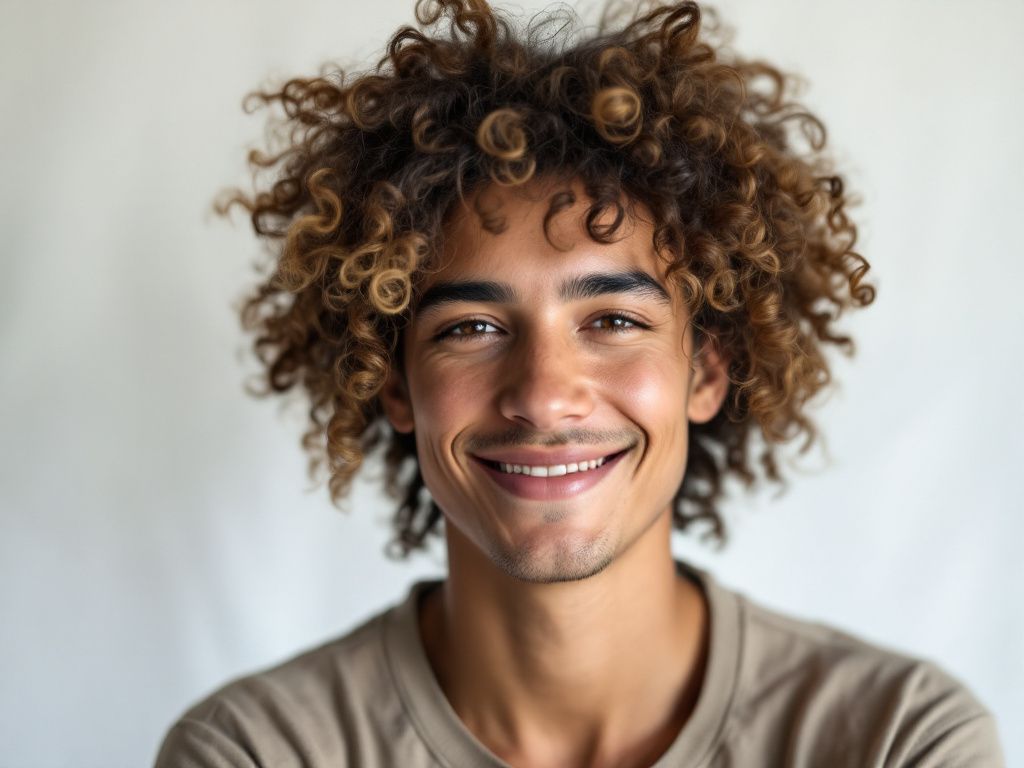
Have you ever pondered why society places so much weight on hair type? This seemingly innocuous obsession with whether one’s locks are curly, straight, or somewhere in between is deeply embedded in cultural norms. However, it’s time to reconsider the importance we attribute to hair types. As an expert in the field, let’s take a comprehensive dive into why this fixation could be both unnecessary and harmful, backed by research, case studies, and expert opinions.
Redefining Hair Norms: A Historical Perspective
Throughout history, hair has been an emblem of social standing and identity. In various cultures, the texture and type of hair have been intertwined with definitions of beauty and worth.
Ancient Understanding of Hair Textures
For centuries, hair has played a role in societal positions. In ancient Egypt, for example, wigs denoting different statuses were popular, but hair texture played a vital role in establishing supremacy and aesthetics. Fast forward to Europe in the 17th century, when elaborate wigs became a norm among the aristocracy, once again reflecting societal standards rather than personal choice.
The Rise of Modern Hair Bias
Jumping into the 20th century, the discussion about hair texture discrimination and curly versus straight hair took center stage. It was somewhat epitomized by the pervasive “good hair” ideology that grasped tightly to a Eurocentric beauty standard, positioning straight or loosely textured hair as superior. This cultural bias isn’t just sequestered to personal opinions; it extends into professional environments where an employee might confront texture prejudice.
Understanding Hair Science: A Technical Spotlight
To fully grasp the issue, we must first understand the science behind hair types. The shape and type of hair are determined by several factors, but primarily it’s about biology and chemistry.

The Biology Behind It
Hair type is determined by the shape of the follicle. Round follicles produce straight hair, while oval follicles result in curly hair. Understanding that structure isn’t a personal or moral attribute can diffuse some of the loaded cultural significances.
Chemistry of Hair Texture
Hair’s structural protein, keratin, plays a fundamental role. The more sulfide bonds that hair forms between these proteins, the curlier it becomes. This isn’t a testament to strength or beauty; it’s biology in action.
Dispelling Myths with Data
Interestingly, a survey by Dove revealed that only 4 out of 10 little girls with curly hair like their natural hair, largely influenced by how they perceive their hair in societal contexts. These findings reveal significant bias rooted not in preference but systemic stereotypes.
Manifestation of Hair Bias: Real-World Implications
The preference for certain hair types over others doesn’t only shape self-esteem but also practical aspects of life, from hiring practices to personal self-image.
Professional Impact
A particularly noteworthy study conducted by the Perception Institute in 2017 found profound disparities in perception between hair textures. When HR personnel were presented with identical resumes paired with photographs of individuals showing different hair textures, those with curly or natural textures were unfairly affected by hair bias. This reflects a tangible impact on employment opportunities, invalidating potential simply due to physically unchangeable characteristics.
Personal Impact
Those with naturally curly hair frequently encounter texture prejudice. The focus on altering their natural state through processes like straightening implies that their true selves are insufficient. This is particularly prevalent among adolescents who face peer pressure to meet socially accepted appearance standards, reinforcing hair texture discrimination in formative years.

Towards a New Understanding: Redefining Beauty Standards
As society progresses, it becomes paramount to foster new dialogues that embrace diversity in hair textures without preferences or discrimination.
Embracing Hair Diversity
Brands and media incorporating diverse representations of hair textures indicate progress. Continued advocacy for inclusive advertising campaigns fosters healthy self-esteem in individuals who feel alienated by traditional beauty standards. In fact, an analysis by the Journal of Consumer Research found that exposure to more diverse depictions positively impacted individual body and self-esteem.
The Role of Education
Education can negate bias. Educators and parents should focus on promoting inclusivity and self-acceptance among children, abolishing concepts of hair hierarchy, and encouraging children to celebrate all hair types. Initiatives like “Love Your Natural Hair Day,” can serve as significant reinforcements in schools to bolster children’s confidence.
Technical Strategies for Balancing Hair Bias
It’s imperative to integrate methodologies that address biases favorably to reduce hair texture discrimination effectively.
Workplace Best Practices
- HR Training on Impartiality: Best practices should include educating hiring personnel to recognize and overcome personal biases. Companies must incorporate training that addresses unconscious bias, which could subvert preconceived notions linked to visible attributes like hair texture.
- Policy Implementation: Amend office policies that generically qualify certain appearances as “unprofessional.” Initiatives like the CROWN Act, which prohibits discrimination based on hair texture and protective styles, should be universally adopted.
Personal Engagement

While broader societal changes are necessary, individual acknowledgment and responsiveness can contribute substantially.
- Promotional Engagement: Encourage platforms for individuals to share personal hair journeys in media exposures—thus fostering dialogue about the beauty in individuality.
- Community Support Groups: Establish support groups rallying around natural texture acceptance to support individuals dealing with ongoing hair bias, offering tools and strategies for coping and self-advocacy.
Capturing Traditional Wisdom
An appreciation for historical hair culture can dismantle hierarchy. People and cultures have innovated infinite styling art forms—braiding, twisting, locking—infusing traditions with beauty, reflecting their stories, styles, and status across historical epochs.
Conclusion: Call to Action for Unified Acceptance
While the dialogue surrounding curly vs straight hair and hair texture discrimination is age-old, it remains vital. As we voyage further into the 21st century, the need to propagate narratives inclusive of all textures remains. Personalized choices around hair maintenance and care should prioritize individual well-being over societal acceptance.
As professionals, consumers, advocates, or individuals, we are potent forces in accepting and purity-returning diversity in an unbiased way which honors personal preferences. Through candor, education, and active engagement in diverse representations, let us collectively drive towards genuine beauty inclusivity unmatched by narrow ideology. Together, we shall unfetter from pre-existing constraints to a future where every hair texture speaks the universality of individuality effortlessly! 🌟
—
By subverting prevalent narratives and championing tolerance, we can catalyze fundamental shifts, adapting norms that holistically pursue neutrality, acceptance, and reverence for what truly is the expanse of human variation.
Frequently Asked Questions
What are the benefits of using a hair mask in my hair care routine?
Using a hair mask can provide several benefits, including hydration, smoothing, strengthening, curl definition, heat protection, and damage repair. Hair masks infuse the hair with moisture, help coat the hair shaft to seal split ends, reduce breakage, and protect the hair from heat styling and environmental damage[1][4].
What ingredients should I look for in a hair mask?
Effective hair masks often include ingredients such as coconut oil, argan oil, shea butter, honey, avocado oil, green tea, and coconut water. These ingredients provide nourishment, moisturize, and protect the hair, offering benefits like softening, moisturizing, and protecting against damage[2][5].
How often should I use a hair mask in my routine?
You should use a hair mask whenever your hair feels dry, unmanageable, or in need of intense hydration. This can vary depending on your hair type and needs, but generally, using a hair mask once or twice a week can help maintain healthy and moisturized hair[1][4].
How do I apply a hair mask for the best results?
To apply a hair mask effectively, shampoo your hair first, then apply the mask, focusing especially on the ends where hair tends to be the most damaged. Leave the mask on for anywhere from 10 minutes to overnight, depending on the type of mask and your hair’s needs[1][4].
References


Leave a Reply